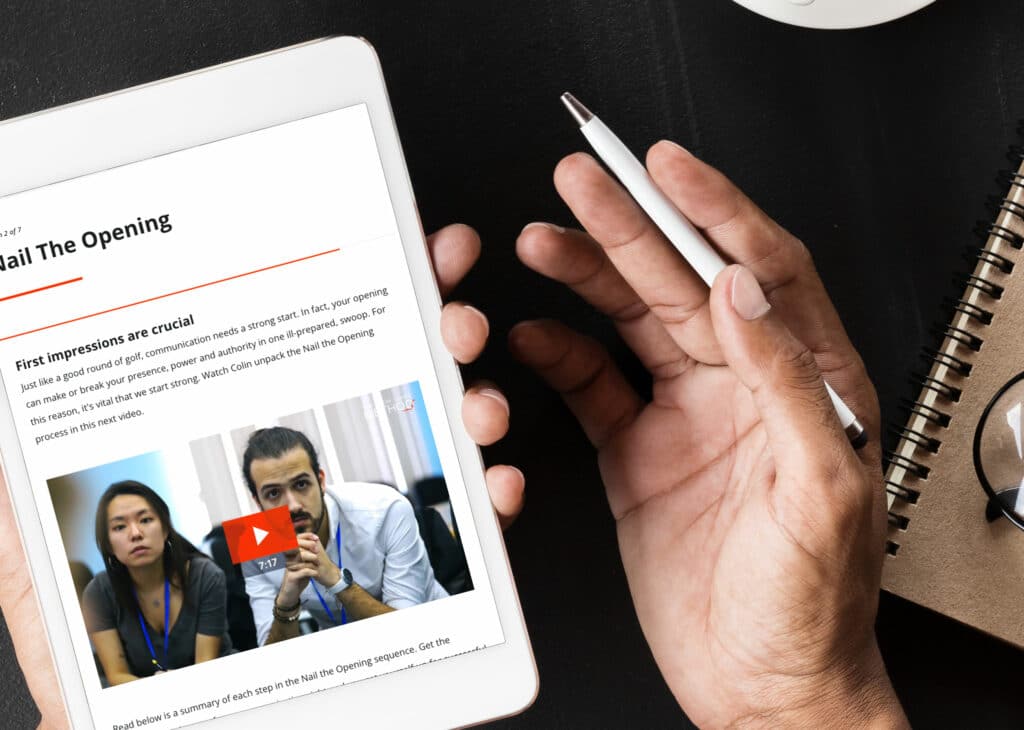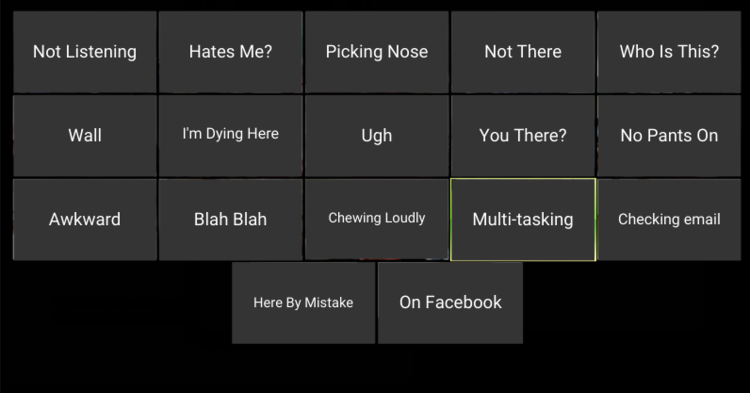Summary
- Poor communication is the inability to convey information effectively, it hampers understanding, resulting in confusion, alienation, and decreased productivity. Long-term effects include strained relationships, legal disputes, and a tarnished reputation, highlighting the need for rectification.
- 4 poor communications skills you should avoid include modeling outdated communication styles from colleagues, limiting skills to specific occasions, excessive reliance on technology, and focusing on self or organization rather than client needs.
- To improve communication skills apply continuous learning and a versatile skill application.
What are Poor Communication Skills in the Workplace?
Even if you think you’re a reasonably good communicator at work, there’s always room for improvement. In fact, you may not be aware you have picked up any poor communication habits unless you get specific feedback, e.g. from your manager at a performance review.
So what are poor communication skills? Poor communication skills refer to an individual’s inability or inadequacy in effectively conveying information, ideas, thoughts, or emotions to others in various interpersonal or professional settings. It involves difficulties in expressing oneself clearly, listening actively, understanding others’ perspectives, and appropriately adapting communication methods to different contexts or audiences.
No matter what seniority level you’re at, with the right training you can safely identify areas to improve upon, banish poor practices and start developing good communication habits in the workplace.
What are the Effects of Poor Communication?
Poor communication can have both short term and long term effects.
On a day to day basis, poor communication can cause confusion, lack of understanding and a feeling of alienation. Poor communication can lead to interrupted workflows and processes, missed deadlines, and a less productive working environment. It can also cause poor relationships within teams, between colleagues and with customers.
In the longer term, poor communication can lead to further tension, potentially resulting in costly legal disputes. It can also damage reputations and can lead to a crisis of faith in senior management. Ultimately, poor communication can really drag a company down, causing serious issues if not addressed and rectified.
-
- Misunderstandings and Errors: Ineffective communication often leads to misunderstandings, misinterpretations, and errors in tasks or projects. Unclear instructions or information can result in employees making mistakes, impacting work quality and outcomes.
-
- Decreased Productivity: Poor communication can hinder workflow efficiency. When instructions are unclear, or there’s a lack of proper communication channels, employees might spend excessive time seeking clarification or resolving misunderstandings, leading to delays in completing tasks.
-
- Conflict and Tension: Miscommunication can breed conflict among team members. Misunderstandings, unresolved issues, or lack of clarity in communication can create tension, affecting team dynamics and collaboration. This can lead to a negative work environment, decreased morale, and higher employee turnover.
-
- Impact on Innovation and Creativity: In an environment where communication is ineffective, employees might hesitate to share ideas or collaborate. This stifles creativity and innovation as individuals feel discouraged or unheard, limiting the flow of fresh ideas and potential solutions.
-
- Customer Dissatisfaction: Poor communication within a company can extend to interactions with customers or clients. If employees cannot communicate effectively with clients, it can lead to misunderstandings, dissatisfaction, and potential loss of business.
-
- Wasted Time and Resources: Miscommunication often results in wasted time and resources as efforts are duplicated, tasks need redoing, or projects veer off course due to a lack of clear direction or updates.
-
- Lack of Clear Vision and Goals: If communication from management about the company’s vision, goals, or strategies is unclear or inconsistent, employees may feel disconnected and unsure about their roles or the organization’s direction.
-
- Risk of Safety Incidents: In certain industries like manufacturing or healthcare, poor communication can lead to safety hazards. Misunderstandings or lack of clear instructions might result in accidents or mistakes that compromise safety protocols.
- Damage to Reputation: External communication that lacks clarity or consistency, such as misleading information or misrepresentations, can damage the organization’s reputation, affecting relationships with stakeholders, clients, or the public.
Poor Communication Skills You Should Avoid
1. Modeling Skills on Colleagues
Stop modelling your communication skills solely on colleagues, it can lead to the adoption of outdated or ineffective communication habits.
-
- Outdated Techniques and Habits: Newcomers in a workplace often observe and learn from their immediate surroundings, including colleagues, managers, and team members. However, relying solely on these models for communication skills can pose challenges. Senior leaders or long-standing employees might possess outdated techniques that were learned years ago and haven’t been updated with modern practices.
-
- Ineffectiveness of Overloaded Presentations: One common issue encountered in modeling after others is the replication of overloaded and ineffective PowerPoint presentations. Using slides inundated with excessive technical details or lacking in engaging content can lead to a loss of audience interest and fail to effectively convey the intended message. Such presentations, filled with jargon and lacking in clear, concise information, often fail to influence or engage audiences.
-
- Low Energy and Unmotivated Communication Style: Moreover, mimicking the communication style of colleagues may inadvertently lead to adopting low-energy or unmotivated approaches. Some communication models might lack the enthusiasm or charisma needed to inspire, motivate, or influence others. A lack of engaging delivery can hinder the effectiveness of the message being conveyed.
- The Importance of Continuous Learning: To avoid the pitfalls of solely emulating colleagues, individuals should focus on continuous learning and development in communication skills. Seeking updated resources, attending modern communication training sessions, or exploring diverse communication styles can aid in developing a well-rounded and effective communication repertoire. Adapting to the changing landscape of effective communication practices ensures that individuals can engage, influence, and convey their ideas with impact, rather than replicating outdated or ineffective methods learned solely from their immediate work environment.
2. Not Utilising New Skills Across all Communications Scenarios
Don’t just acquire communication skills for specific high-stakes situation. It isn’t sufficient! It’s essential to consistently apply these skills across various communication scenarios in the workplace.
If you’ve had communications training in the past, it’s probably because there was a big delivery looming and you needed some pointers on how to pull it off. In doing so, you likely picked up some skills that you utilise perhaps once a year.
But good communication is a complex skill set needed in a wide variety of scenarios in the workplace, from face-to-face meetings, to over the phone, and in writing. Hybrid working also requires expert virtual communication skills in order to showcase what you want to say effectively.
Therefore you should be practicing all the time – emails, performance reviews, networking events, team meetings and client conversations, can all be uplifted with your new skills and structure for delivering. Don’t limit yourself to using your new skills for an important client pitch.
Instead, try and do the following:
- Utilize skills consistently
- Continuously practice across all communication scenarios
- Avoid restricting usage to specific occasions
- Embracing a holistic approach to communication enhancement
Remember the importance of applying and honing communication skills consistently across a spectrum of workplace interactions, encouraging a continuous learning and application process rather than reserving these skills for select important occasions.
3. Hiding Behind Technology
Don’t rely excessively on digital mediums which can have you shying away from direct interpersonal interactions. This approach often leads to significant drawbacks:
-
- Overdependence on Slides or Text: Some individuals rely heavily on slides or text-based communication rather than engaging directly. This reliance may hinder the personal touch necessary for effective communication.
-
- Camera Turned Off in Virtual Meetings: Turning off the video camera during virtual meetings can distance individuals from active participation. While it allows for multitasking, it hampers visual connection and rapport-building among participants.
-
- ‘Virtual Presenteeism’: This term refers to being present in a virtual meeting without active participation or engagement. It fosters a habit of multitasking but leads to decreased attentiveness and inefficiency.
-
- Reduced Efficiency and Productivity: Multitasking while keeping one ear on the meeting compromises both the quality of the individual’s work and their engagement in the discussion.
- Improved Engagement and Collaboration: Engaging actively in virtual meetings by turning on the camera can significantly enhance the interaction experience. Sharleen’s experience highlights the positive impact of this change, as it enables others to visually connect with her, improving her project outcomes through increased engagement and collaboration.
Hiding behind technology and avoiding direct interaction can hinder effective communication. It can hamper personal connections, reduce engagement, and impact productivity, underscoring the importance of active participation and visual presence in virtual communication environments for better collaboration and outcomes.
4. Making it all About You or Your Organisation
I once coached a client who was preparing for a big delivery and was showcasing their presentation to me. The first few slides focussed on who they were, spoke about their company and then took another five minutes to get to anything related to the client they were pitching to. In my book that’s a big fail.
Making it all about you or your organization – emphasizes a common pitfall where individuals or presenters tend to prioritize showcasing themselves or their company instead of focusing on the client or audience’s needs.
A lack of a client-centric approach often result in:
-
- A Self-Centered Presentation: presentations or communications start with an extensive focus on the speaker’s achievements, company background, or offerings, neglecting to address the audience’s interests or needs promptly.
- Delayed Connection Building: Spending a considerable amount of time discussing oneself or the organization before addressing the client’s concerns or interests can hinder establishing a strong and immediate connection with the audience.
The focus should always be on the client first and foremost and the value you can bring to them. Build that connection before you even talk about yourself or your organisation. We have a methodology that speaks to this in our training called ‘outcome from the audience perspective’ it allows you to diagnose client needs before you speak to them to ensure your presentation hits the mark.
Don’t Let Poor Communication Skills Hold You Back
Do you want to effectively communicate in team meetings or wish you had the tools to deliver a pitch that makes clients sit up and listen?
Our newly revised Mastering Communication Online course will give you four-months of access to 9 modules of world-class communication skills training.
Learn fast for a specific delivery or take each module at your own pace. Feel more confident about delivering an impactful message with tools and techniques you can practice and implement immediately. Find out more about the online Mastering Communication Program here.
The Colin James Method® Facilitators train corporate executives to improve their professional communication skills with a proven methodology. Our highly trained Facilitators and Coaches are recognised for their experience in their fields and have worked with many individuals and organisations around the world to master the art of communication.












